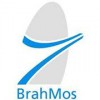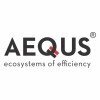Filter interviews by
BrahMos Aerospace Interview Questions and Answers
6 Interview questions
Plating provides corrosion resistance, improved appearance, and increased durability to metal surfaces.
Corrosion resistance: Plating creates a barrier between the metal surface and the environment, preventing corrosion and rusting.
Improved appearance: Plating can enhance the appearance of metal surfaces by adding a layer of shine or color.
Increased durability: Plating can increase the hardness and wear resistance ...
Types of inspection in plating include visual inspection, thickness measurement, adhesion testing, and corrosion resistance testing.
Visual inspection involves examining the plated surface for defects such as pits, cracks, or uneven coating.
Thickness measurement is done using techniques like X-ray fluorescence or eddy current testing to ensure the plating meets specified thickness requirements.
Adhesion testing asse...
There are several types of anodizing processes used in electroplating.
The most common types of anodizing are sulfuric acid anodizing, chromic acid anodizing, and hardcoat anodizing.
Sulfuric acid anodizing is the most widely used method and provides a corrosion-resistant coating.
Chromic acid anodizing is used for aluminum alloys that require a thin, non-conductive coating.
Hardcoat anodizing, also known as Type III ...
Electroplating is a process of depositing a layer of metal onto a surface using an electric current.
Electroplating involves immersing the object to be plated (called the substrate) into a solution containing metal ions.
A direct current is then passed through the solution, causing the metal ions to be attracted to the substrate and form a metal coating.
The metal coating can provide various benefits such as improved...
Electroplating is used to prevent discoloration, increase corrosion resistance, improve conductivity, enhance wear resistance, and for decorative purposes.
Electroplating is a process of coating a metal object with a thin layer of another metal using electrolysis.
To prevent discoloration, electroplating is used to add a protective layer to the metal object.
Electroplating can also increase the corrosion resistance o...
Anodizing is an electrochemical process that forms a protective oxide layer on the surface of a metal.
Anodizing involves immersing the metal in an electrolyte solution and applying an electric current.
The metal acts as the anode and a cathode is also present in the solution.
The electric current causes oxygen ions to combine with the metal atoms, forming a layer of metal oxide on the surface.
The thickness and prope...
BrahMos Aerospace Interview Experiences
6 interviews found
I appeared for an interview in Oct 2024, where I was asked the following questions.
- Q1. Tradre questions
- Q2. Measuring instruments
I applied via Campus Placement and was interviewed in Nov 2023. There was 1 interview round.
(2 Questions)
- Q1. They can ask you anything, obviously more from the chosen topic/subject, in my case it was Digital electronics like flip flops, counter in detail combinational and sequential everything.
- Q2. Also, a long detailed discussion on Op-amp, and few basic questions from digital communication.
Interview Preparation Tips
- Op-amp
- Sequential Circuit
- Digital Communication
I applied via Approached by Company and was interviewed in Mar 2023. There were 3 interview rounds.

(1 Question)
- Q1. Personal details and last company detail
(1 Question)
- Q1. Technical questions
I applied via Approached by Company and was interviewed in Oct 2021. There were 2 interview rounds.

(6 Questions)
- Q1. What is electroplating
- Ans.
Electroplating is a process of depositing a layer of metal onto a surface using an electric current.
Electroplating involves immersing the object to be plated (called the substrate) into a solution containing metal ions.
A direct current is then passed through the solution, causing the metal ions to be attracted to the substrate and form a metal coating.
The metal coating can provide various benefits such as improved appe...
- Q2. Advantages on plating
- Ans.
Plating provides corrosion resistance, improved appearance, and increased durability to metal surfaces.
Corrosion resistance: Plating creates a barrier between the metal surface and the environment, preventing corrosion and rusting.
Improved appearance: Plating can enhance the appearance of metal surfaces by adding a layer of shine or color.
Increased durability: Plating can increase the hardness and wear resistance of me...
- Q3. To prevent discoloration Corrosion resistance Conductivity Wear resistance Decorative purposes
- Ans.
Electroplating is used to prevent discoloration, increase corrosion resistance, improve conductivity, enhance wear resistance, and for decorative purposes.
Electroplating is a process of coating a metal object with a thin layer of another metal using electrolysis.
To prevent discoloration, electroplating is used to add a protective layer to the metal object.
Electroplating can also increase the corrosion resistance of the...
- Q4. Procedures of anodizing
- Ans.
Anodizing is an electrochemical process that forms a protective oxide layer on the surface of a metal.
Anodizing involves immersing the metal in an electrolyte solution and applying an electric current.
The metal acts as the anode and a cathode is also present in the solution.
The electric current causes oxygen ions to combine with the metal atoms, forming a layer of metal oxide on the surface.
The thickness and properties...
- Q5. How many types of anodizing
- Ans.
There are several types of anodizing processes used in electroplating.
The most common types of anodizing are sulfuric acid anodizing, chromic acid anodizing, and hardcoat anodizing.
Sulfuric acid anodizing is the most widely used method and provides a corrosion-resistant coating.
Chromic acid anodizing is used for aluminum alloys that require a thin, non-conductive coating.
Hardcoat anodizing, also known as Type III anodi...
- Q6. Types of inspection in plating
- Ans.
Types of inspection in plating include visual inspection, thickness measurement, adhesion testing, and corrosion resistance testing.
Visual inspection involves examining the plated surface for defects such as pits, cracks, or uneven coating.
Thickness measurement is done using techniques like X-ray fluorescence or eddy current testing to ensure the plating meets specified thickness requirements.
Adhesion testing assesses ...
Interview Preparation Tips
I applied via YouTube and was interviewed in Oct 2020. There was 1 interview round.
Interview Questionnaire
2 Questions
- Q1. Basics of Mechanical engineering
- Q2. Previous experience was heavily scrutinized
Interview Preparation Tips
I applied via NATS and was interviewed before May 2021. There were 2 interview rounds.
Subject oriented
(1 Question)
- Q1. Electrical installation,Switchgear,Theories and Laws,Electronics basics,personal details
Interview Preparation Tips
Top trending discussions






Interview questions from similar companies

I applied via Recruitment Consulltant and was interviewed before Feb 2021. There were 5 interview rounds.
Basic c Programming and Embedded Systems
(1 Question)
- Q1. C and Do-178b questions
(1 Question)
- Q1. C and Embedded system and Project related
(1 Question)
- Q1. Manager Round, Mostly technical
(1 Question)
- Q1. Package discussion and my previous employer details
Interview Preparation Tips

Software Developer Interview Questions & Answers
Honeywell Technology Solutionsposted on 2 Sep 2017
I appeared for an interview in Oct 2016.
Interview Questionnaire
1 Question
- Q1. Explain machine learning and how is cloud important?
- Ans.
Machine learning is a branch of AI that enables computers to learn and make predictions without explicit programming.
Machine learning is a subset of artificial intelligence (AI) that focuses on developing algorithms and models that allow computers to learn from and make predictions or decisions based on data.
It involves training a model on a large dataset and using it to make predictions or decisions on new, unseen dat...
Interview Preparation Tips
Experience: The question were not adaptive but it tested all the knowledge of c and database.
Tips: Be clear in your concepts
Round: Technical Interview
Experience: The questions were based on your resume.
Tips: Don't fake anything in your CV
Skills: Software Skills
College Name: Manipal Institute Of Technology, Manipal
Skills evaluated in this interview

I appeared for an interview in Dec 2016.
Interview Questionnaire
1 Question
- Q1. Basics questions from thermodynamics were asked. But I was unable to solve deflection problem in Strength of material
Interview Preparation Tips
Experience: Quantitative analysis questions were easy but technical questions were hard enough. I had cleared the Aptitude test
Tips: Go through the basics of each subject in your respective branch.
Duration: 1 hour 30 minutes
Total Questions: 100
Round: Group Discussion
Experience: We were given 5 minutes for preparation and then discussion started. I made a mistake by cross questioning the people in my group, but still i got selected
Tips: Try to start the discussion or try to give the conclusion.
Duration: 10 minutes
Round: Technical Interview
Experience: I did not get selected for next round
College Name: Sinhgad College Of Engineering (SCOE)

I applied via Campus Placement and was interviewed in Oct 2017. There were 3 interview rounds.
Interview Questionnaire
3 Questions
- Q1. Its like technical round, they asked about automobile engineering.
- Q2. They asked about the engine basics, and it went deep.
- Q3. They asked about my academic projects, which I mentioned in my resume.
Interview Preparation Tips
Duration: 1-4 weeks
College Name: ARAI pune
BrahMos Aerospace Interview FAQs
Tell us how to improve this page.
BrahMos Aerospace Interviews By Designations
Interview Questions for Popular Designations
- Associate Interview Questions
- Analyst Interview Questions
- Software Engineer Interview Questions
- Associate Software Engineer Interview Questions
- Graduate Engineer Trainee (Get) Interview Questions
- System Engineer Interview Questions
- Data Analyst Interview Questions
- Senior Software Engineer Interview Questions
- Show more
Overall Interview Experience Rating
based on 4 interview experiences
Difficulty level
Duration
Interview Questions from Similar Companies
BrahMos Aerospace Reviews and Ratings
based on 65 reviews
Rating in categories
|
Associate Engineer
39
salaries
| ₹2.7 L/yr - ₹4.5 L/yr |
|
Associate Supervisor
20
salaries
| ₹2.2 L/yr - ₹4 L/yr |
|
Quality Engineer
11
salaries
| ₹2.5 L/yr - ₹4.2 L/yr |
|
Supervisor
10
salaries
| ₹1.5 L/yr - ₹3 L/yr |
|
Mechanical Engineer
9
salaries
| ₹2.4 L/yr - ₹3.6 L/yr |

Indian Army

Tata Advanced Systems

Hindustan Aeronautics

Honeywell Technology Solutions
- Home >
- Interviews >
- BrahMos Aerospace Interview Questions










